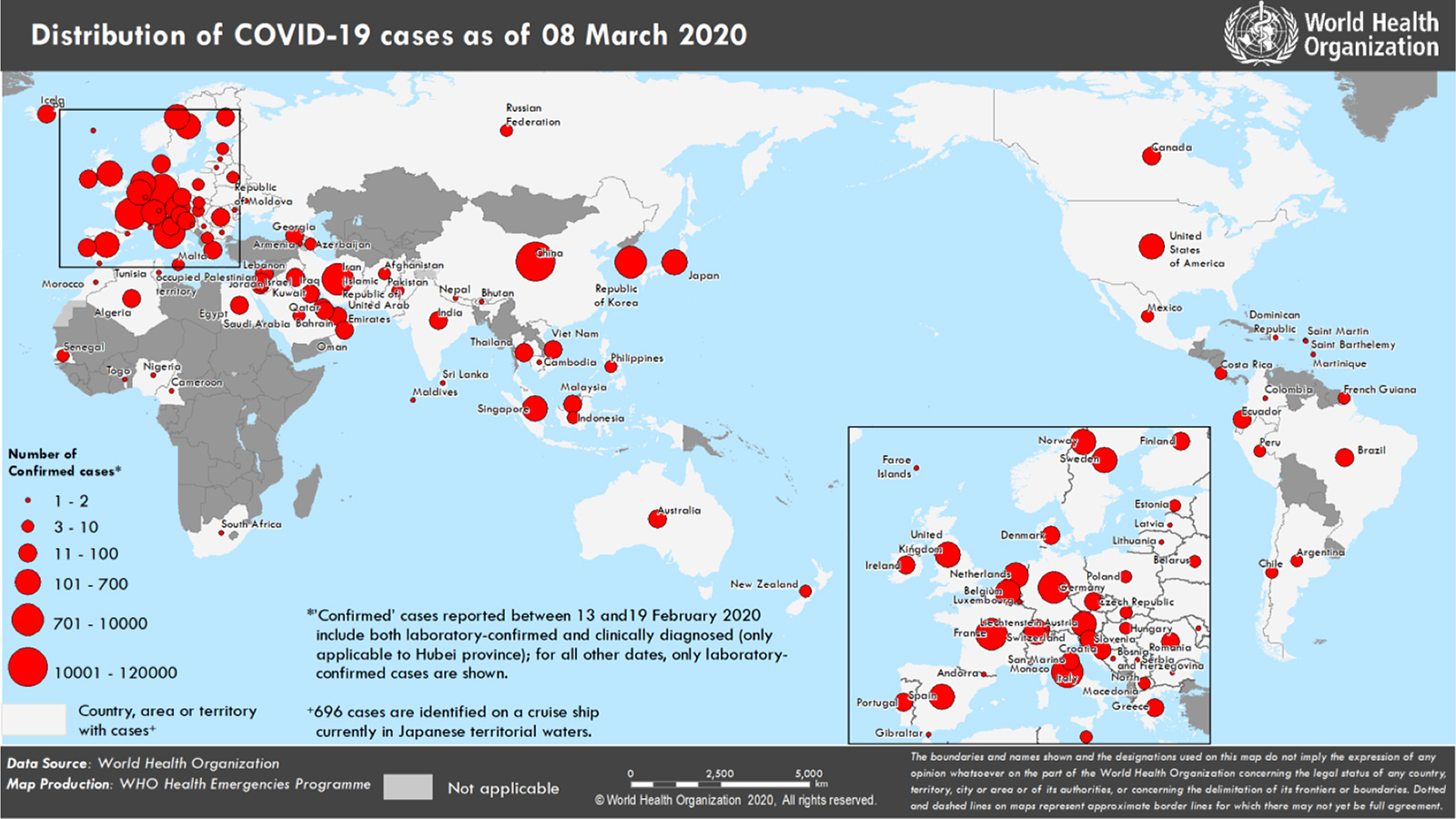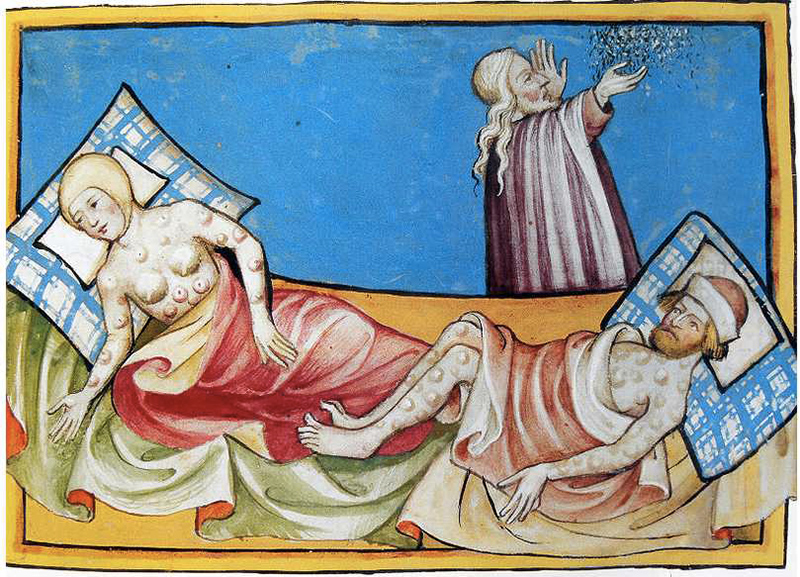WHP Team
Washington, USA
Note: This blog contains information that might be upsetting for some people. All of us have been impacted in one way or another by the COVID-19 outbreak. We're doing everything we can to keep learning accessible throughout the pandemic. Learn more about those efforts here.
The focus on, and the response to, the most recent coronavirus (COVID-19) has been overwhelming. Many people are frightened about their health and that of their loved ones, and appropriately so. We should be vigilant about taking measures to help prevent the virus’ spread. We also want to stay informed, which means checking updates from the experts at the World Health Organization (WHO) and the Centers for Disease Control and Prevention (CDC). It’s also helpful to compare this epidemic to other epidemics. We can study the historical context surrounding epidemics and pandemics, and use our claim testing skills to assess information being shared on social media.
If you’re interested in learning how other (BHP/WHP) teachers are addressing COVID-19 in their classrooms, please join the conversation here.
 Distribution of COVID-19 cases as of 4 March 2020. Image courtesy of the World Health Organization (WHO).
Distribution of COVID-19 cases as of 4 March 2020. Image courtesy of the World Health Organization (WHO).
This isn’t the first time we’ve had to respond to a disease epidemic. The worst pandemic of the modern era was the 1918-1919 influenza outbreak which infected about one-third of the global population (about 500 million people). This outbreak led to the deaths of at least 50 million people. It is estimated that every person with the virus infected an average of 1.2-3 people. In confined settings or dense cities, this rate was much higher, more likely 2.1–7.5. This rate of infection is called the reproduction rate, and extremely high reproduction rates were a key reason why this pandemic was particularly devastating. Researchers also estimate that 2.5% of people who got the virus, died from it—this is called the mortality rate. But the mortality rate is only an estimate because we don’t know how many people actually contracted the flu, only how many cases were confirmed.

Crowded conditions and the movement of troops during World War I likely contributed to the spread of the 1918 virus around the world. Public domain.
The influenza pandemic struck toward the end of World War I and is thought to have spread rapidly among soldiers living in close quarters on the battlefield and on transport ships. The virus hit when we didn’t have the medical technology to test for it or treat it, in a world that had yet to discover penicillin (antibiotics) or antiviral drugs that combat flu symptoms or ventilators to help people breathe. Many regions also did not have an organized effort to contain the virus.
Although the 1918-1919 influenza outbreak caused great suffering, we also learned a lot from it. We discovered antibiotics to treat bacterial infections that often arise in conjunction with a virus and measures to quarantine people more effectively to stop the spread of the virus. So, we’ve come a long way from this pandemic to the current viral epidemics.
That said, there are also some ominous lessons from 1918-1919. For example, the 1918-1919 influenza epidemic went through a period where it waned during the spring and summer months and then came back in full force in the fall and winter. This is why health professionals continue to inform us about washing our hands and refraining from touching our faces, as this is one of the best ways to help stop the spread of viruses.
 This illustration, created at the Centers for Disease Control and Prevention (CDC), reveals ultrastructural morphology exhibited by coronaviruses. Note the spikes that adorn the outer surface of the virus, which impart the look of a corona surrounding the virion, when viewed electron microscopically. By CDC/Alissa Eckert, MS, public domain.
This illustration, created at the Centers for Disease Control and Prevention (CDC), reveals ultrastructural morphology exhibited by coronaviruses. Note the spikes that adorn the outer surface of the virus, which impart the look of a corona surrounding the virion, when viewed electron microscopically. By CDC/Alissa Eckert, MS, public domain.
Influenza isn’t the only historical epidemic or pandemic. There are other viruses that can spread rapidly such as Ebola and the bubonic plague or Black Death. Most people are probably familiar with Ebola, as it’s one of the most recent viral outbreaks. Much like the coronavirus, the ebolavirus has between four to five different mutations. The most deadly of these is the species Zaire ebolavirus. While there have been multiple Ebola outbreaks since the 1970s, the one with which most people are familiar is the 2013 outbreak that mainly affected western Africa (Guinea, Sierra Leone, and Liberia). One of the primary reasons for the international media coverage at the time was due to the high death rate and the fact that there was no known cure or vaccine.

Physicians in Nigeria being trained by the WHO on how to protect themselves from Ebola. By CDC Global - PPE Training, CC BY 2.0.
In 2014, the WHO issued a public health emergency and publicized a plan to help afflicted countries contain the virus. However, Ebola has an average incubation period of 2-21 days. This gives people a lot of time to move around without realizing they are sick or contagious. Ebola can also be easily transmitted, with one infected person on average infecting another 1.5-2.5 people. Contact with an infected person, their clothing or the medical equipment used to treat them, can transmit the virus to others. That made for a frightening story.
Even though the virus was mainly contained to Africa, cases were seen outside of the continent. One man traveled from Africa to Texas unknowingly infected with the disease, which set off alarm bells and a great deal of fear and panic. While a vaccine was in the trial process, it had yet to be approved for the public. When healthcare workers who had volunteered to help with the epidemic from the US, Italy, Britain, and Spain contracted it, people were worried it would spread. Luckily, all of those patients were able to receive experimental treatment and survived. However, by the end of the epidemic, over 28,000 were infected, and the recorded deaths exceeded 11,000, making the mortality rate an average of 40-60% depending on location. But that is not the end of the story for Ebola, as additional outbreaks have occurred in the Democratic Republic of Congo beginning in 2017 and again in 2018. Fortunately, there is now an approved vaccine to treat patients and help prevent the spread of the virus. Still, a civil war in that country has made it difficult to contain the virus and to provide essential medical services.
The pandemic that almost all students learn about in history courses is the Black Death. Considering the graphic first-hand accounts of Black Death symptoms and extremely high death rate, it’s no wonder that this pandemic is the one that sticks in most people’s minds. This virus transmitted very easily from human to human contact in a world that lacked proper sanitation and modern medicine. Once infected, the virus had an incubation rate between 2-6 days, which allowed for people to travel a good distance without showing any symptoms. Some cities did take precautions that they hoped would save them. They closed the city to trade, in essence calling for a city-wide quarantine. In fact, the word quarantine comes from fourteenth-century Italy, when ships in Venice were forced to stay away from the port for fear that the merchants on board would infect the city. Fear of the plague was justified—it killed approximately 100 million people, or about one-third of the population of affected regions in Afro-Eurasia. The mortality rate varied depending on the geographic region, but historians estimate that it was between 30-60%. As historian Bennett Sherry states, “To put its effects into a twenty-first century perspective, an epidemic today on … [this] scale would kill between one and two billion people.”
 Fourteenth-century depiction of the Black Death. Public domain.
Fourteenth-century depiction of the Black Death. Public domain.
With COVID-19, we simply don’t have a lot of information yet. This lack of information is largely due to the fact that there has been little time to test people for infection. Because we don’t know how many people are infected, it is not possible to calculate the reproduction rate or the mortality rate. In confined settings such as cruise ships, the numbers have been high enough for us all to be very cautious. However, even in these controlled circumstances, we don’t have all of the data.
Experts are estimating that the incubation period of COVID-19 is between 2-14 days and the mortality rate is about 3%. Researchers have also estimated that each infected person could infect 2-3 more people. But again, these numbers are only informed guesses because we don’t know how many people are infected versus confirmed cases. Some people will have mild cases that come and go and never get tested and reported. There has also been a shortage of test kits available. What we do know is that we will recover, both physically and financially, just as we have done after each of the epidemics that have come before this one. We will learn from the lessons of this virus just as we have learned from those of the past.
To keep up to date with COVID-19, visit the WHO and the CDC websites. To learn more about historical pandemics visit the WHP’s website for the activity on the Black Death called Contagion!, the WHP articles “Trade Networks and the Black Death” and “Reactions to the Black Death” along with the BHP’s Investigation 8.
Sources
Barbaro, Michael. Interview with Donald G. McNeil, Jr. The Daily – The New York Times. Podcast audio. February 27, 2020. https://www.nytimes.com/2020/02/27/podcasts/the-daily/coronavirus.html.
Centers for Disease Control and Prevention, National Center for Immunization and Respiratory Diseases (NCIRD). “Pandemic Basics.” Centers for Disease Control and Prevention (CDC), November 3, 2016. https://www.cdc.gov/flu/pandemic-resources/basics/index.html.
_____. “1918 Pandemic (H1N1 virus).” CDC, March 20, 2019. https://www.cdc.gov/flu/pandemic-resources/1918-pandemic-h1n1.html.
_____. “2014-2016 Ebola Outbreak in West Africa.” CDC, March 8, 2019. https://www.cdc.gov/vhf/ebola/history/2014-2016-outbreak/index.html.
Ghebreyesus, Tedros Adhanom (Director-General of WHO). “WHO Director-General’s opening remarks at the mission briefing on COVID-19 – 26 February 2020.” WHO, February 26, 2020. https://www.who.int/dg/speeches/detail/who-director-general-s-opening-remarks-at-the-mission-briefing-on-covid-19---26-february-2020.
National Center for Immunization and Respiratory Diseases (NCIRD), Division of Viral Diseases. “Coronavirus Disease 2019 (COVID-9) Situation Summary.” CDC, February 25, 2020. https://www.cdc.gov/coronavirus/2019-ncov/summary.html.
Sherry, Bennett. “Trade Networks and the Black Death.” The World History Project, 2019. https://whp.oerproject.com/WHP-Media/PDFs/Era5/Trade-Networks-and-the-Black-Death.
Soucheray, Stephanie. “Study of 72,000 COVID-19 patients finds 2.3% death rate.” University of Minnesota: Center for Infectious Disease Research and Policy, February 24, 2020. http://www.cidrap.umn.edu/news-perspective/2020/02/study-72000-covid-19-patients-finds-23-death-rate.
World Health Organization. “Coronavirus disease (COVID-19) outbreak.” WHO, February 7, 2020. https://www.who.int/emergencies/diseases/novel-coronavirus-2019.
Cover image: Left: Red Cross workers of Boston, Massachusetts remove bundles of masks designated for American soldiers, while other nurses are busy making them, March 1919. © PhotoQuest / Getty Images. Right: Nurses assemble the plastic facial shield recycled in a hospital designated for COVID-19 patients in Wuhan in central China's Hubei province, March 2020 © Feature China/Barcroft Media via Getty Images.
 For full access to all OER Project resources AND our amazing teacher community,
For full access to all OER Project resources AND our amazing teacher community, 
